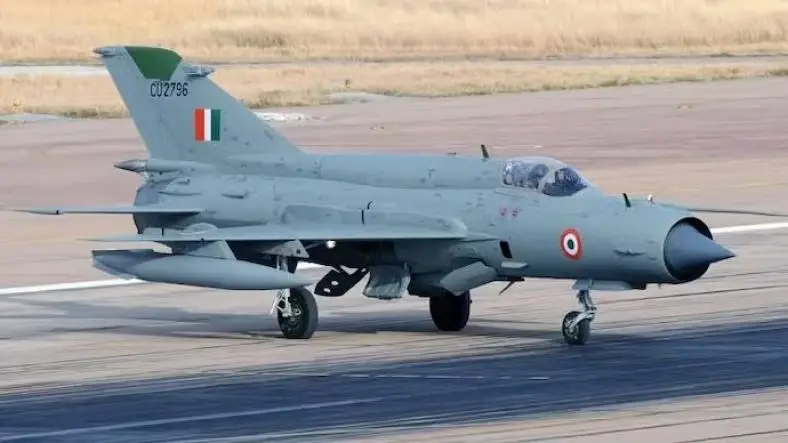India’s journey toward becoming a modern air power took flight with the MiG‑21, a supersonic fighter aircraft that served the nation with distinction for over six decades. As the Indian Air Force prepares to bid farewell to this iconic aircraft in September 2025, it is a moment of reflection and pride for every Indian.
A Historic Induction
The MiG-21 was inducted into the Indian Air Force (IAF) in 1963, marking a major leap in India’s military aviation capability. It was India’s first supersonic fighter jet, capable of flying at speeds over Mach 2 (twice the speed of sound). At the time, it made India one of the few countries in the world—and the first in Asia—to operate a supersonic aircraft.
This induction was a strategic shift. Moving away from Western suppliers, India signed an agreement with the Soviet Union not only to acquire the MiG‑21, but also to produce it in India. This collaboration led to Hindustan Aeronautics Limited (HAL) building nearly 657 MiG-21s under license, contributing immensely to India's aerospace self-reliance.
Service Across Decades and Conflicts
The MiG‑21’s service record is nothing short of historic. It has been a part of every major conflict involving India since its induction:
- 1965 India-Pakistan War: Though used cautiously at first, the MiG-21 laid the foundation for supersonic air combat in South Asia.
- 1971 War for Bangladesh Liberation: The MiG-21 proved its combat effectiveness by securing air superiority and successfully engaging enemy aircraft.
- Kargil Conflict, 1999: MiG-21s flew bombing sorties and provided crucial support to Indian troops in high-altitude operations.
- Balakot Operation, 2019: Wing Commander Abhinandan Varthaman flew a MiG-21 Bison during the post-Balakot aerial engagement and shot down a Pakistani F-16, further cementing the aircraft’s place in IAF history.
The MiG-21 has flown with many prestigious squadrons like No. 3 (Cobras), No. 4 (Oorials), and No. 23 (Panthers), among others. Its presence has been felt across all major IAF air bases over the years.
Versions and Modernization
India operated several variants of the MiG-21 over the decades:
- MiG-21FL (Type 77) – the first variant to be built under license in India.
- MiG-21M (Type 88) and MiG-21bis – more advanced variants introduced through the 1970s and 80s.
- MiG-21 Bison – an extensively upgraded version introduced in the early 2000s with advanced avionics, radar, and weapons systems to extend the aircraft's life and effectiveness.
At its peak, India had around 400 MiG‑21s across 19 squadrons, making it the backbone of the IAF for many years.
The Need for Retirement
Despite its glorious legacy, the MiG‑21’s long service has naturally brought challenges. Over the years, the aircraft began to show signs of ageing. Its design, though revolutionary in the 1960s, became outdated and increasingly difficult to maintain in modern warfare conditions.
India faced 482 MiG‑21 crashes, with more than 170 pilot fatalities, mostly due to mechanical failures, training incidents, and the ageing airframes. These tragedies led to the aircraft being referred to—unfairly, in many opinions—as a “flying coffin.” However, it is essential to remember that the aircraft served far beyond its originally intended lifespan and in scenarios that demanded more than it was designed for.
Google Ad 1
The Indian Air Force began phasing out the older variants by the early 2010s, with only the upgraded MiG-21 Bison remaining in service. Even so, its retirement was delayed due to the lack of timely replacements, such as the indigenous HAL Tejas Mk1A.
Retirement Schedule and Numbers
As of 2024–2025, the Indian Air Force operates two active MiG‑21 Bison squadrons: No. 3 Squadron (“Cobras”) and No. 23 Squadron ("Panthers") based at Nal Air Base, Rajasthan. This squadron is set to retire the aircraft on 19 September 2025, with a ceremonial final flight planned from Chandigarh Air Base.
- Total MiG-21 aircraft acquired by India: Over 872
- Currently in service (mid-2025): Around 36 MiG-21 Bison
- Final retirement date: 19 September 2025
- Years of service: 62
After this, the MiG‑21 will officially end its operational chapter in India’s air defence history.
A Legacy of National Pride
The MiG‑21 represents more than just an aircraft. For India, it symbolizes the rise of a sovereign nation’s air power. It trained generations of IAF pilots, contributed to India’s aerospace manufacturing strength, and defended the skies in some of the most crucial moments in Indian history.
Its retirement is not a failure of the machine—it is a celebration of extraordinary service. The fact that the MiG‑21 remained operational for over six decades in one of the world's most active air forces is a testament to the aircraft's engineering and the skill of Indian maintenance crews and pilots.
Conclusion
As India prepares to retire the MiG-21 in 2025, the nation salutes a warrior that stood guard over its skies through war, peace, and transformation. The MiG-21 may be leaving active service, but its legacy will forever live on—in history books, in aviation museums, and in the hearts of countless Indians who have grown up admiring the jet that once ruled the Indian skies.
Jai Hind.
Thanks for reading the article, read out articles for more such articles.














